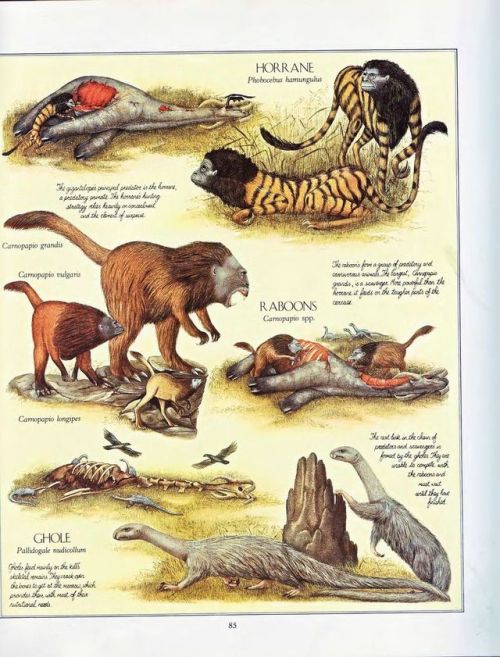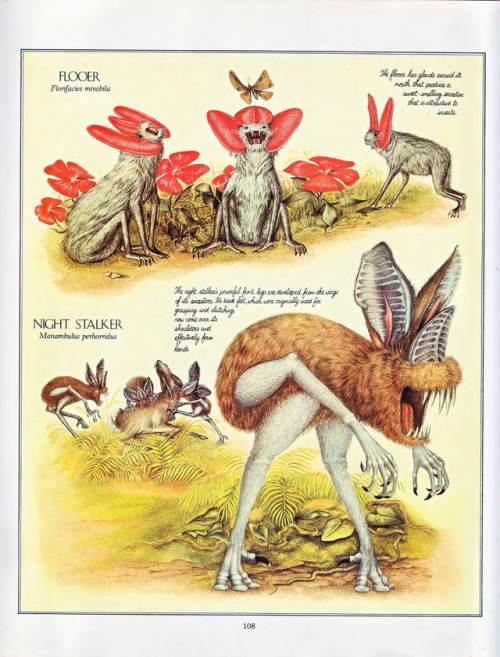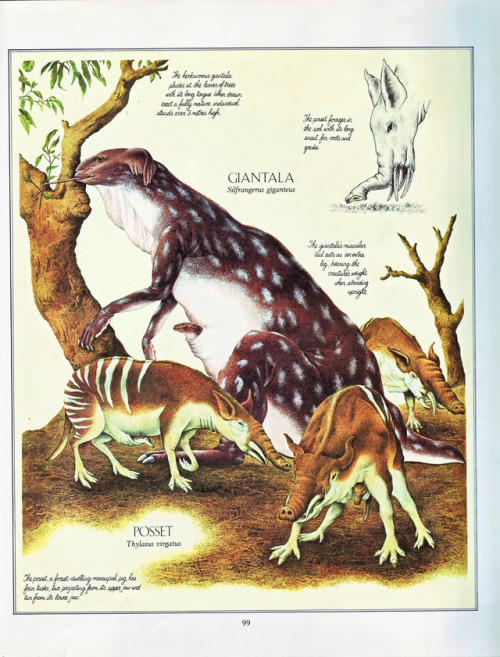From Being Relaxed To Seeing Something Scary


from being relaxed to seeing something scary
More Posts from Leafyfern and Others







I am loved.




gynandromorphism in spiders
a gynandromorph is an organism that exhibits male and female characteristics. bilateral asymmetry can occur wherein one “side” of the animal is female and the other is male, mosaicism can occur wherein the characteristics are distributed in patches. in spiders, this phenomenon can present itself through presence of both testes and overies and split colouration. cases can also occur where, although parts of the spider are clearly male or female, the divisions can be less definite; certain reproductive organs like the palps and epigyne may be very poorly developed or completely absent. these individuals are referred to as intersexes. gynandry and intersexuality can occur in the same individual.
pictured: lampropelma nigerrimum, pamphobeteus sp. mascara, poecilotheria ornata, thyene imperialis.







One of the best and most imaginative books ever written about science and science communication was “After Man: A Zoology of the Future” (1981), which guessed, based on what we know about the laws of evolution, what the future would look like millions of years from now when humans are extinct.
I would look at this one in the library, and just read it for hours. My favorite is the idea the humble rat would diversify into a thousand species, including huge predators, and that eventually, an island would be settled by flying bats, who then diversify into dozens of roles, including ground-walking echolocation predators.
Extremely beautiful springtail, Lepidocyrtus paradoxus. Totally covered in iridescent scales - my photos do a poor job of capturing just how shiny this animal is.




hand over the cursed Sphenodon facts.
sure, but PUT THE GUN DOWN.
the Tuatara is a medium-sized reptile native to New Zealand.

it looks like a lizard but it IS NOT- the Tuatara is actually a very basal reptile related to snakes and lizards but belonging to an entire different branch of the tree of life, of which it is the sole surviving member.

and it may look like a lizard on the outside, but the inside is what really counts! and on the inside, the Tuatara is basically a reskinned amphibian.

they only have a single lung, their heart is the most basic of all reptiles, and their nervous systems shares more in common with our friend the axolotl than with its lizard kin!

so if you happen to see one at the zoo, take a moment to stop and really appreciate the uninterrupted 240 million years of reptilian history you’re lucky enough to be looking at!


Reblog if you agree.

Little squeak
(Source)
Living Decay

Curled in the heart of the forest lie an elk
still and quiet, he waits
in the shadows of nightfall,
and lets the cold embrace his stationary form.
When dawn comes
he remains, rooted to the ground
warming the earth where he lay,
nourishing the soil.
As weeks pass his soft exterior
gives way to a brittle and unforgiving interior
yet still
a family of small mammals find their way into his ribcage
and bring life back into his
hollow body.
Generations of forest creatures will come to know
his body as a beacon of being,
and a symbol of home.
Do you have any cursed facts about deer? They are my favorite animal.
there’s an entire subset of deer that have sabre fangs instead of antlers!

this is because the very earliest deer on the planet had both antlers AND fangs, but over time deer diverged into two separate lineages that had either antlers OR fangs and they’re both still around today!
-
 malik-zaki liked this · 5 years ago
malik-zaki liked this · 5 years ago -
 synapple liked this · 5 years ago
synapple liked this · 5 years ago -
 3--2--1--gone reblogged this · 5 years ago
3--2--1--gone reblogged this · 5 years ago -
 salamechecad liked this · 5 years ago
salamechecad liked this · 5 years ago -
 defect-defect liked this · 5 years ago
defect-defect liked this · 5 years ago -
 xiuho liked this · 5 years ago
xiuho liked this · 5 years ago -
 wildstorkmel liked this · 5 years ago
wildstorkmel liked this · 5 years ago -
 so1vitur-ambu1ando liked this · 5 years ago
so1vitur-ambu1ando liked this · 5 years ago -
 determined-mind liked this · 5 years ago
determined-mind liked this · 5 years ago -
 bananacracker33 reblogged this · 5 years ago
bananacracker33 reblogged this · 5 years ago -
 iamlivengood-blog liked this · 5 years ago
iamlivengood-blog liked this · 5 years ago -
 st753m reblogged this · 5 years ago
st753m reblogged this · 5 years ago -
 jicket liked this · 5 years ago
jicket liked this · 5 years ago -
 kittyofinsanity liked this · 5 years ago
kittyofinsanity liked this · 5 years ago -
 springkingkyne reblogged this · 5 years ago
springkingkyne reblogged this · 5 years ago -
 felis-lupus reblogged this · 5 years ago
felis-lupus reblogged this · 5 years ago -
 felis-lupus liked this · 5 years ago
felis-lupus liked this · 5 years ago -
 cute-untagged-shit reblogged this · 5 years ago
cute-untagged-shit reblogged this · 5 years ago -
 screamy-kiwi reblogged this · 5 years ago
screamy-kiwi reblogged this · 5 years ago -
 pastaandsaucemage liked this · 5 years ago
pastaandsaucemage liked this · 5 years ago -
 berdnirdius reblogged this · 5 years ago
berdnirdius reblogged this · 5 years ago -
 actuallyapigeon liked this · 5 years ago
actuallyapigeon liked this · 5 years ago -
 themanwhovibez liked this · 5 years ago
themanwhovibez liked this · 5 years ago -
 lemon-breaddd liked this · 5 years ago
lemon-breaddd liked this · 5 years ago -
 alpha-canismajoris reblogged this · 5 years ago
alpha-canismajoris reblogged this · 5 years ago -
 jasonphantombear reblogged this · 5 years ago
jasonphantombear reblogged this · 5 years ago -
 jasonphantombear liked this · 5 years ago
jasonphantombear liked this · 5 years ago -
 theelrueben reblogged this · 5 years ago
theelrueben reblogged this · 5 years ago -
 magifox1123 liked this · 5 years ago
magifox1123 liked this · 5 years ago -
 ore-no-utau-kike reblogged this · 5 years ago
ore-no-utau-kike reblogged this · 5 years ago -
 shannoonatnoon liked this · 5 years ago
shannoonatnoon liked this · 5 years ago -
 dangara2610 liked this · 5 years ago
dangara2610 liked this · 5 years ago -
 whatevenareusernamesanyway liked this · 5 years ago
whatevenareusernamesanyway liked this · 5 years ago -
 unpatchedglitch liked this · 5 years ago
unpatchedglitch liked this · 5 years ago -
 aznblossom liked this · 5 years ago
aznblossom liked this · 5 years ago -
 mercifulgamingandartworks liked this · 5 years ago
mercifulgamingandartworks liked this · 5 years ago -
 gracenovamon reblogged this · 5 years ago
gracenovamon reblogged this · 5 years ago -
 gayberdnird liked this · 5 years ago
gayberdnird liked this · 5 years ago -
 jodiggity reblogged this · 5 years ago
jodiggity reblogged this · 5 years ago -
 jodiggity liked this · 5 years ago
jodiggity liked this · 5 years ago -
 hylianpixl liked this · 5 years ago
hylianpixl liked this · 5 years ago

skull and spider enthusiast//check out @voooorheestaurus sun moon & rising
201 posts